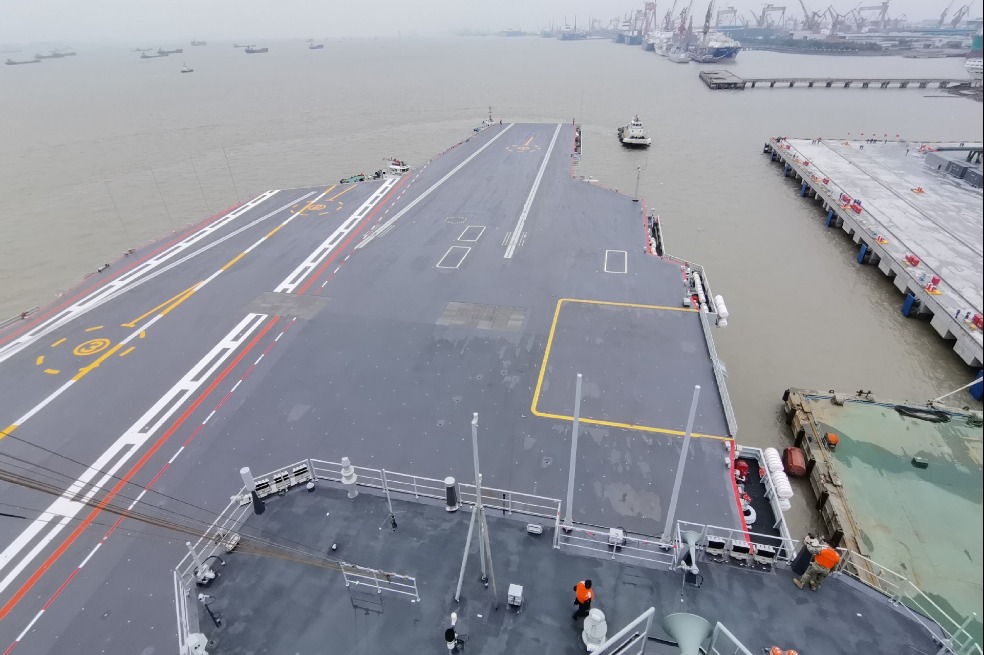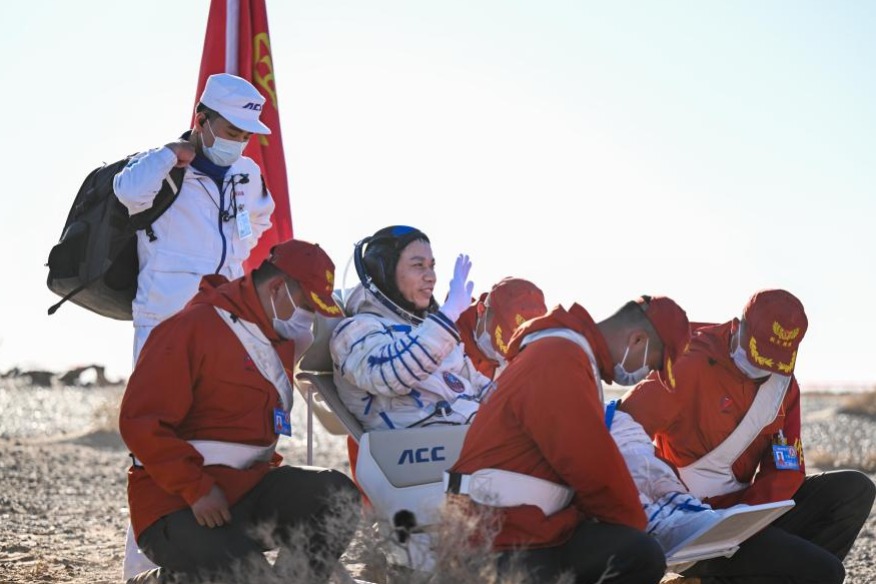Integration of NEVs, power grid gets fillip
Document to provide robust support for building new electricity system
By OUYANG SHIJIA | CHINA DAILY | Updated: 2024-01-06 07:31

China has unveiled a new guideline on strengthening the integration of new energy vehicles with the power grid, signaling a strategic move to provide robust support for constructing a new power system and promote high-quality development in the NEV sector.
Industry experts said the new document lists several measures and responds to the challenges posed by increasing demand for battery charging. It also aims to reduce energy costs, optimize power grid operations, drive energy transition and contribute to China's carbon emission reduction goals.
The document, released on Thursday by the National Development and Reform Commission and three other central departments, said China will pilot vehicle-grid interaction in areas that are ready for implementation such as the Yangtze River Delta, the Pearl River Delta, the Beijing-Tianjin-Hebei region, Shandong province and the Sichuan-Chongqing region.
It said the country will strive to construct more than five demonstration cities and over 50 bidirectional charging and discharging demonstration projects by the end of 2025.
By 2025, China aims to put in place the initial framework for the vehicle-grid interaction technical standards, with over 60 percent of annual charging volume in participating cities occurring during offpeak hours and more than 80 percent from private charging stations in off-peak hours.
Looking ahead to 2030, China envisions completing the basic framework for the vehicle-grid interaction technical standards, refining market mechanisms and scaling up the application of vehicle-grid interaction. NEVs will become an important part of the electrochemical energy storage system.
"It marks the first time that China has issued national-level policies on strengthening integration between NEVs and the electric grid," said Dong Xiaoyu, a senior expert at Zhongguancun Development Group. "The country seeks to manage the power demand arising from growth in NEV numbers and the increase in battery charging."
Dong, who is also a researcher at the China Energy Research Society, said the new guideline comes amid the increased maturity of vehicle-to-grid technology, or V2G, which enables EVs to adopt smart-charging methods to utilize low-cost and renewable energy when it is available and earn revenue by feeding energy back into the grid to help balance the system.
"China has seen successful tests conducted in locations like Shanghai, which means a solid technological foundation for implementing measures mapped out by the document," he said.
The new guideline said the country would take more steps to intensify key technology research on power batteries, expedite the formulation and revision of national and industry standards for vehicle-grid interaction and promote intelligent charging facilities.
"The issuance indicates that the government attaches great significance to the development of the integration between NEVs and the power grid," said Zhan Junhao, founder of Fujian Huace Brand Positioning Consulting. "The country will continue to support innovation in the NEV industry and promote a transformation in energy consumption patterns. And it will also encourage the private sector's participation and strengthen the construction of market mechanism."
Zhan said he believes that the NEV industry will embrace a new round of development opportunities. "Companies involved in the construction and operation of charging facilities will benefit from policy support. Enterprises engaged in related technology research and applications, such as the internet of vehicles, will see huge opportunities in the market."
Looking ahead, Bai Wenxi, vice-chairman of the China Enterprise Capital Union, said the country should make more efforts to support the development of such an emerging field, including introducing more favorable tax policies and financial support measures to encourage enterprises to increase investment and innovation.
More efforts should also be made to strengthen technological research and the construction of the standards system and improve the market mechanism, including building an electricity pricing mechanism for peak hours and off-peak hours, he said.
ouyangshijia@chinadaily.com.cn
























